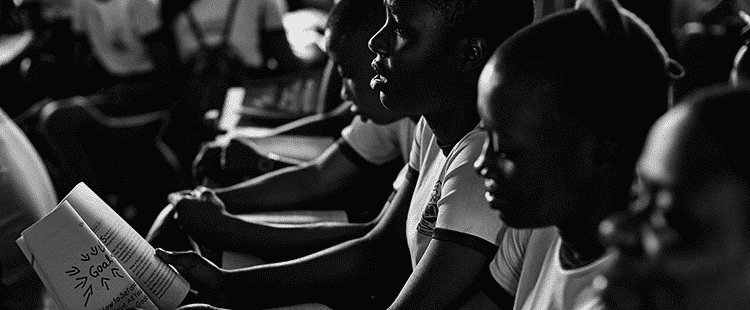
During the first half of 2019, the topic of social protection has been firing on all cylinders. So what better time than now to offer a compilation of summer readings, organized around 10 thematic questions, all drawing from about 480 materials.
1. Is social protection a productive investment?
A great report by the OECD unbundles the effects of social protection on inclusive economic growthvia micro, meso and macro channels. Daidone et al. have an article on the economic effects of cash transfers in 7 African countries: they examine issues around labor reallocation of beneficiaries (e.g., in Zambia they transitioned from wage to self-employment) and explain how design can affect performance, including in terms of targeting, transfer value and predictability, and messaging (see also 29 microsummaries co-produced with Peterman on national cash transfers in Africa).
2. What are the long-term effects of cash transfers?
Baird et al. explore the effects of unconditional cash transfers on adolescent girls after 5 years from conclusion: they find that the program’s effects in delaying marriage and pregnancy rapidly vanished in a matter of months. Similarly, Blattman et al. show that a $300 grant to spur self-employment in Ethiopia has significant impacts in the first year, but effects fade after the fifth year. In terms of conditional cash transfers (CCTs), a 10-country review by Millan et al. shows strong evidence on education-related outcomes, but is more mixed on learning. Evidence is thinner on employment: only in Nicaragua are long-term effects on labor force participation and income positive.
3. Do people always prefer cash instead of services?
A Brookings piece by Khemani et al asked whether people prefer cash or other services in Bihar. Only 13% of the sample chose cash if it came at the expense of spending on public health and nutrition; in contrast, if cash came in lieu of improving nearby roads, the share respondents choosing cash rose to 35%. A subsequent blog expanded on notion that cash transfers’ politics is messy and complex. Bonus on political economy: an article by Zucco et al. shows that in Turkey and Brazil, conditional transfers are only marginally more popular than similar unconditional transfers, but the difference is larger among better-off households.
4. Can cash transfers reduce intimate partner violence?
A summary of evidence on social assistance and intimate partner violence by Hidrobo and Roy shows that in Ecuador, transfers (in food, cash, and voucher) led to significant reductions of 25-35% in physical violence. In Bangladesh, cash and food transfers combined with accompanying measures (behavioral change) led to a 26% reduction in physical violence, but there were no impacts from transfers alone. In Mali, cash transfers led to a 41% reduction in physical violence in polygamous households, but they had no effects on monogamous families. Bonus: see the excellent FAO guidance on gender-sensitive safety nets design and implementation.
5. Do cash transfers improve girls’ access to education?
A working paper by Evans and Yuan shows that the top development programs for such a goal include CCTs – in South Africa, Malawi, and Nicaragua. However, the bottom of the ranking also features an unconditional cash program (South Africa) and a CCT (Uruguay) (see table 3-4, p.26-27). More broadly, girl-targeted interventions and more general measures seem to deliver similar gains (but may differ in costs).
6. Not only cash: can school feeding reduce chronic malnutrition?
A new article by Gelli et al. on school meals in Ghana found these had no effects on stunting and body mass index among children aged 5–15 years. However, subgroup analysis shows the intervention improved stunting among children of 5-8 years (effect size: 0.12 standard deviations), among the same cohort of children living in poverty (0.22 SD), and among girls (0.12 SDs).
7. Whether cash or in-kind, what happens when programs are connected?
A JDE paper by Tohari et al. estimates that the Unified Database in Indonesia substantially improved eligibility and participation in multiple programs– i.e., the chance of participating in 3 core programs (BLT, Raskin and Jamkesmas) rose by 117%, and expenditures among those participants increased by 30%.
8. How long does it take to scale-up social protection in crises? And how to do so?
Examining the performance of nine countries affected by natural disasters, Barca and Beazley show that response time ranges from 2 weeks to 14 months (see table 4 p.41, as well as figure 3 p.22). Cherrier et al. produced an excellent compendium on humanitarian-social protection linkages (e.g., see contrast in objectives and programs on p.12-13), backed by plenty of examples and resources (I especially liked this UNHCR note to align assistance for refugees).
9. What’s new in public works?
An article by Mani et al. shows that in India, parents’ participation in the NREGA scheme enhanced children’s grade progression and learning, including in terms of reading, writing, math and vocabulary scores. Niehaus provides some thoughtful reflections on the program’s achievements by incorporating biometric cards in delivery (e.g., leakages down by 41%) as well as on the program’s effects on employment (+13%) and poverty (-17%). And a paper by Ravallion estimates that the share of Indian households that want to work but aren’t provided an NREGA job ranges from 10% to around one-third.
10. What’s the state of jobs globally, and how can social protection help?
Merotto et al. have a spectacular quantitative analysis for low and middle-income countries. Here are three nuggets: across jobs, women consistently earn less than men; a staggering 1/3 of the workforce is inactive; and wonder why people migrate? Check out figure 3.4 showing differences in wages across countries for the same economic activities. A fascinating volume by Abramo et al. looks at social protection and ‘labor inclusion’ in Latin America. And in terms of high-income settings, a fantastic report by the OECD outlines experiences and approaches for covering non-standard, platform, and temporary workers.




